Caudiciform succulents (plants) carry fat stems or trunks. They are known as fat plants too. Further their roots may form raising up from the cultivation.
These are popular plants among the gardeners due to the odd shapes they have. So, we are going to cover some of the famous Caudiciform succulents in this article.
Before that, if I elaborate on what caudiciform or caudex plants are, they form thick fat stems and carry a few branches. They are also called Pachycauls due to their unusual appearance.
Usually, the fat stem part conserves water. That would allow the plants to strive during long droughts. You may come across so many Caudiciform plants in your hometown.
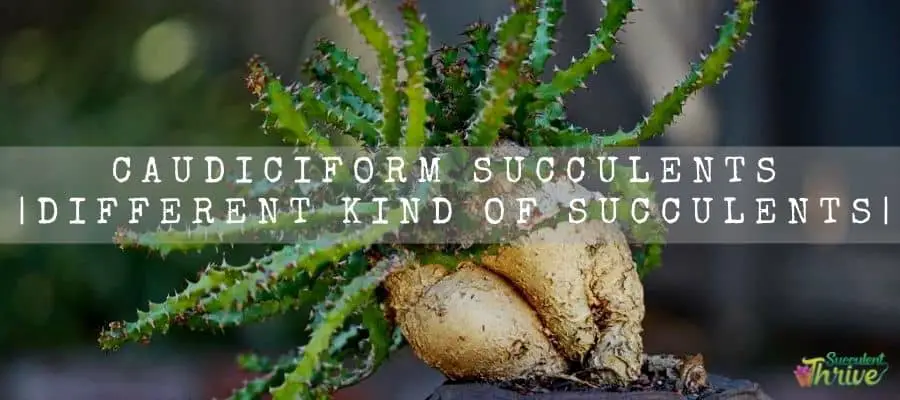
Are caudex plants succulents?
Many of the succulents are caudex plants. You can commonly find Caudiciform among Euphorbia plants, Aloes, Cissus, agapetes and caussonia etc.
Here I am going to describe a few caudiciform succulents in detail.
01. Baseball plant (Euphorbia obesa).
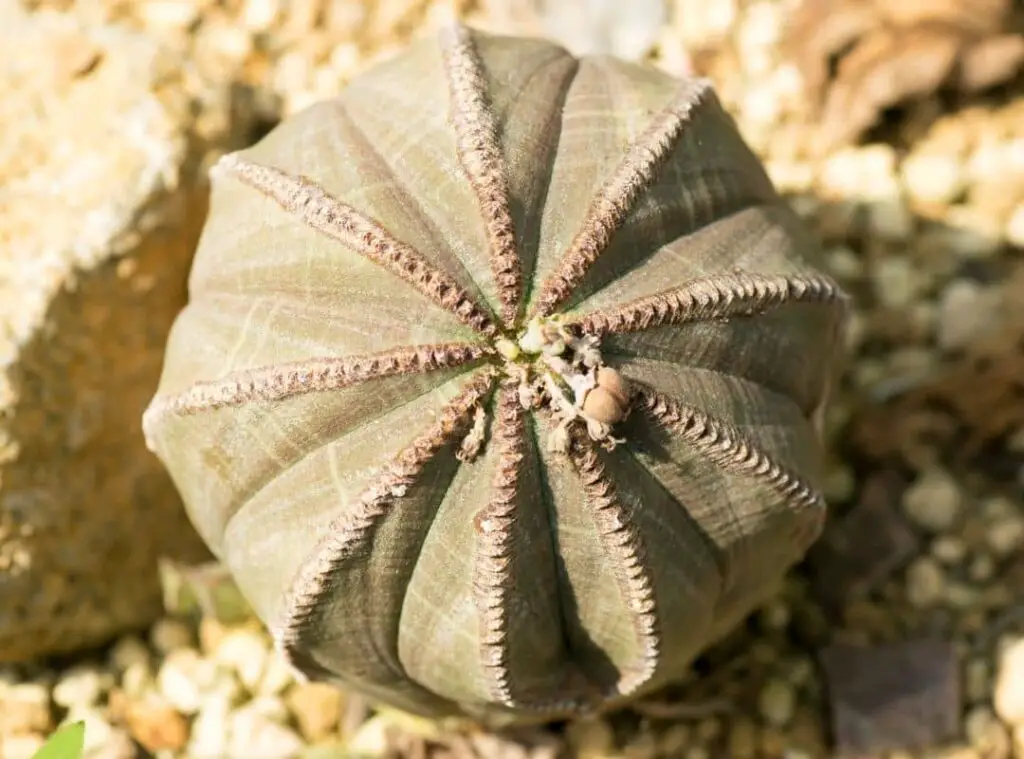
Euphorbia obesa are originating from South Africa. They are known as baseball plants as well.
They usually grow as solitary plants. They do not develop any spines or leaves and tend to resemble a look of a green grown football.
Euphorbia obesa plants usually develop a solid firm stem. They would tend to take a dome shape or spherical shape.
You could spot the stems usually in gray green or iron gray in color. Euphorbia obesa plants produce flowers as well.
Their leaves would be more rudimentary and minuscule. Finally, you could spot these plants carrying about 8 vertical ribs too.
02. Desert rose (Adenium obesum)
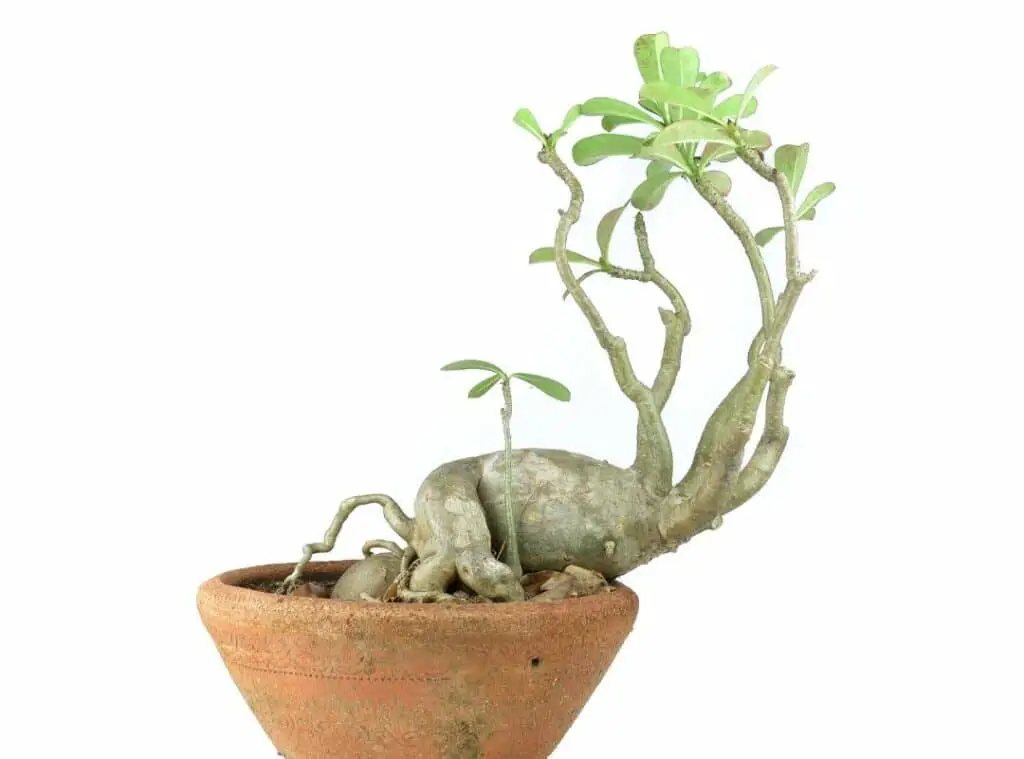
Adenium obesum plants are endemic plants to East Africa. Having said that , many people tend to grow them as ornamental plants worldwide.
Adenium obesum plants usually grow as shrub types. Further they may carry pachycaul stems as well. They would carry a basal caudex which would contain leathery leaves.
Those leaves would be dark green to blue green in color. They would arrange in a spiral way. Besides, Adenium obesum plants would produce flowers in red or pink colors.
They would be tubular shaped. These plants can flower throughout the year.
03. Aloe dichotoma
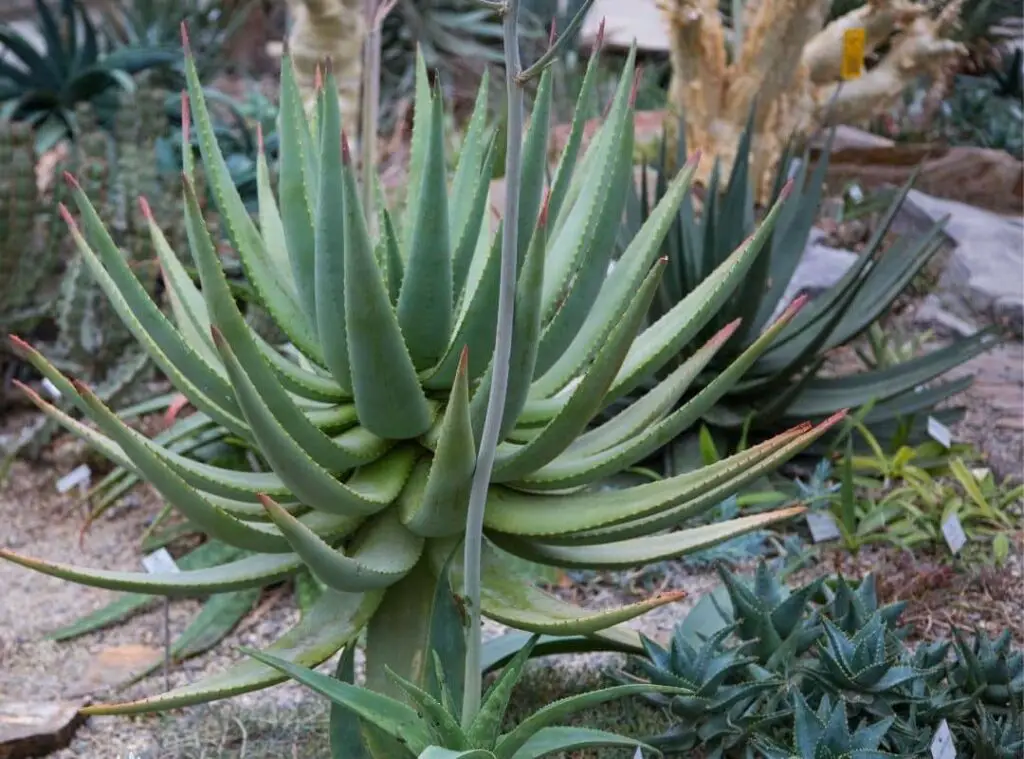
Aloe dichotoma originates from Namibia and from South Africa. The highlight of these plants is that their stem is covered with a whitish powder layer.
Aloe dichotoma leaves would be 30 cm in length and 5 cm in width . Further you could spot them in blue green in color.
Further they may carry yellow margins too. Aloe dichotoma plant leaves tend to grow in a spiral manner. Aloe dichotoma is a flowering plant too. In fact, they produce flowers in bright canary yellow. Those flowers would be round.
04. Aloe pillansii
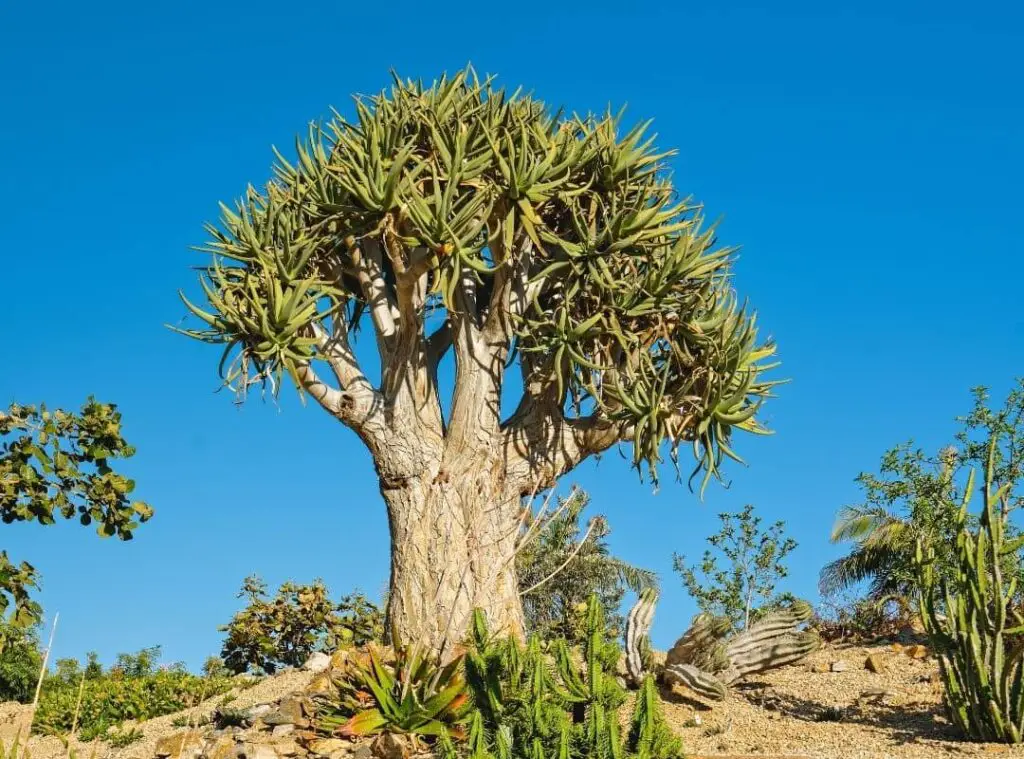
Aloe pillansii are endemic plants to South Africa. They would tend to take a look of a sparingly branched candelabra.
Aloe pillansii trunk would be thick and smooth.Further their leaves would be gray in color. They would form in rosette types and chances are that they may carry white margins too.
Further Aloe pillansii stems would be about 1-2 m in diameter at the bottom part and they would get slender in the top part of the plant.
Last but not least, Aloe pillansii produce pendant shaped flowers in lemon yellow colors.
05. Aloe richardsiae
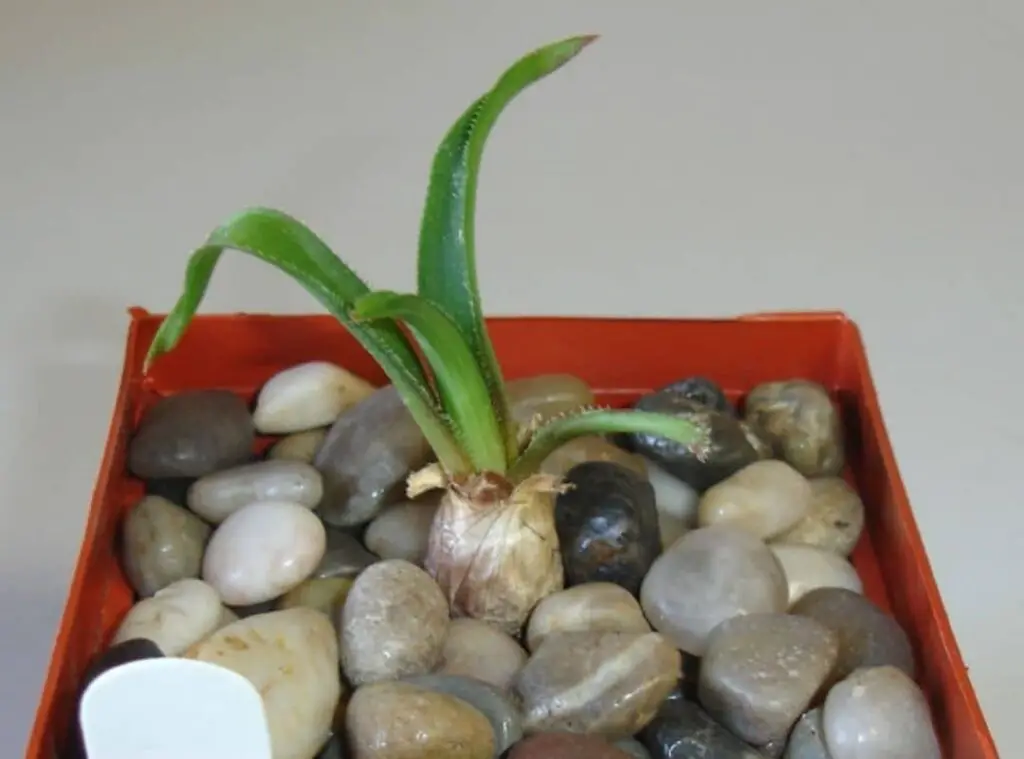
Aloe richardsiae are originally from Tanzania. They usually grow stemless, and Aloe richardsiae leaves will wither during the dry season.
You could spot them carrying a very short stem. Further Aloe richardsiae produce flowers in orange, scarlet.
On the other hand, you could spot them carrying leaves which are rosulate as well. Their leaves will carry a sharp point as well. Moreover, Aloe richardsiae roots would be thick and fleshy as well.
06. Trichodiadema bulbosum
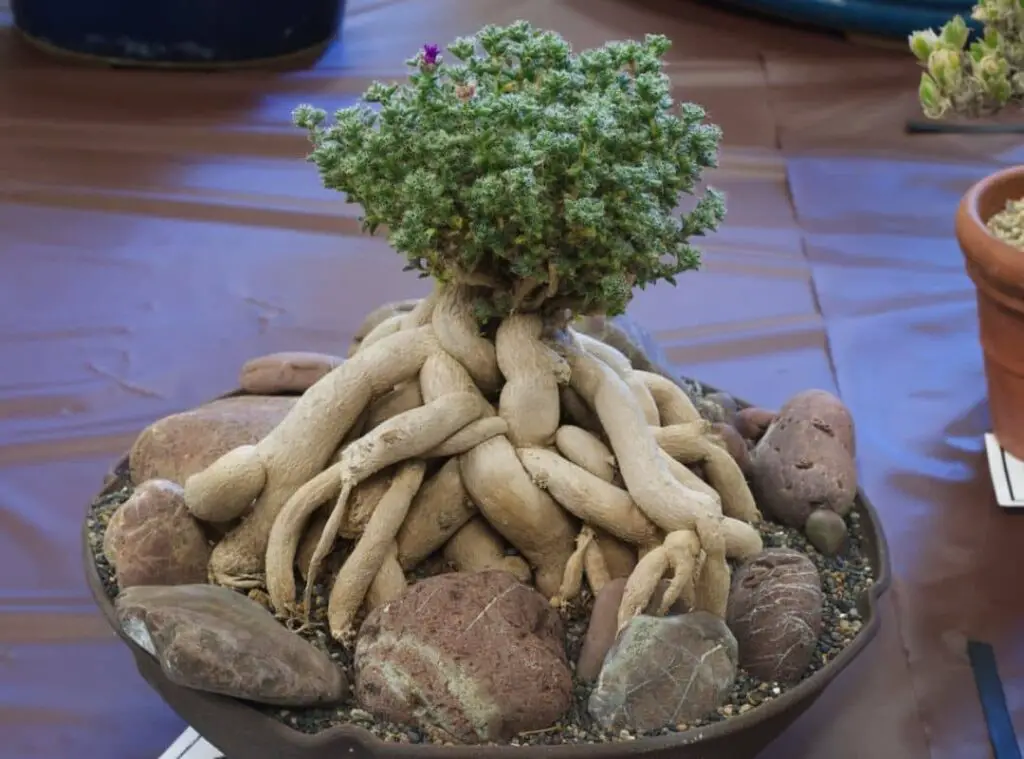
Trichodiadema bulbosum are native plants to South Africa. They also produce a trunk which is the caudex of the plants.
They would produce dense branches and that would ultimately give a look of a low shrub. Trichodiadema bulbosum would further produce flowers in pink.
Their flowering season would be from spring to Autumn. The caudex gives an architectural look for the plants.
Before you report them, you need to ensure that you give them a considerable time for the caudex to establish well.
07. Euphorbia bupleurifolia
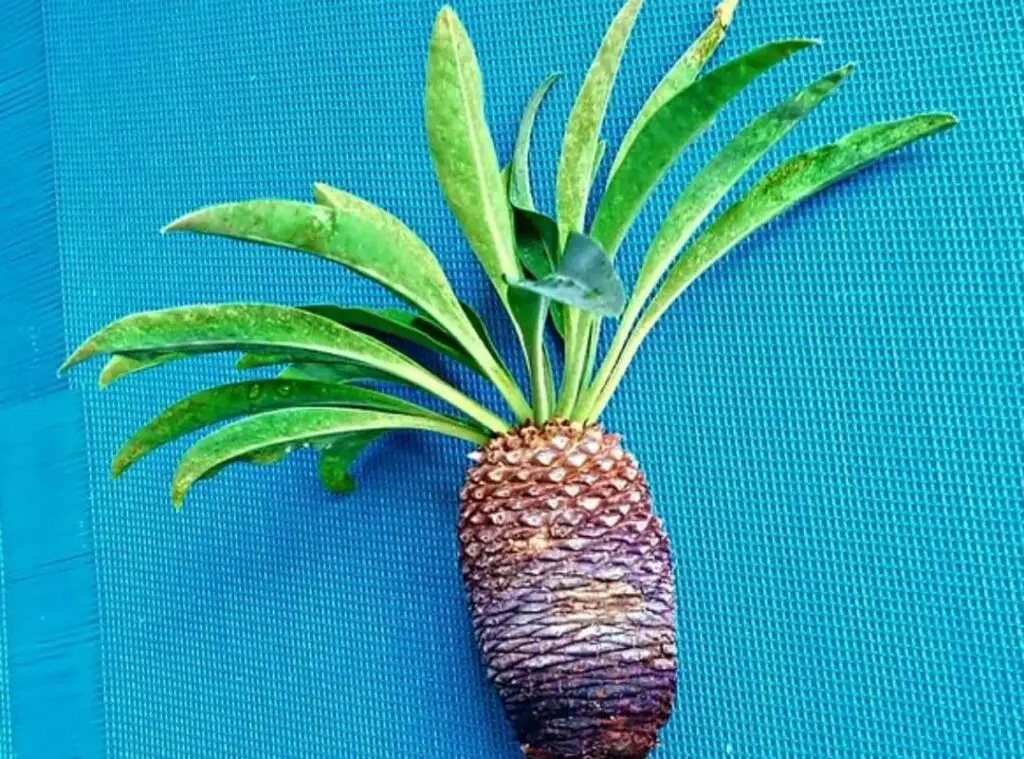
Euphorbia bupleurifolia ate native plants to South Africa. They are a low growing set of plants and do not carry any spines.
The highlight of these plants is that they have a caudiciform trunk and that make them look like a pinecone which is topped with a crown of green leaves.
Euphorbia bupleurifolia stem would be brown in color and spherical or barrel in shape. Their trunk would carry a geometrically neat tubercle surface as well.
Euphorbia bupleurifolia leaves would be more like willow and you could spot them in light green in color. Besides these characteristics, they would produce flowers in yellow-green colors. Further they would become reddish in color as they further grow.
08. Euphorbia cauducifolia
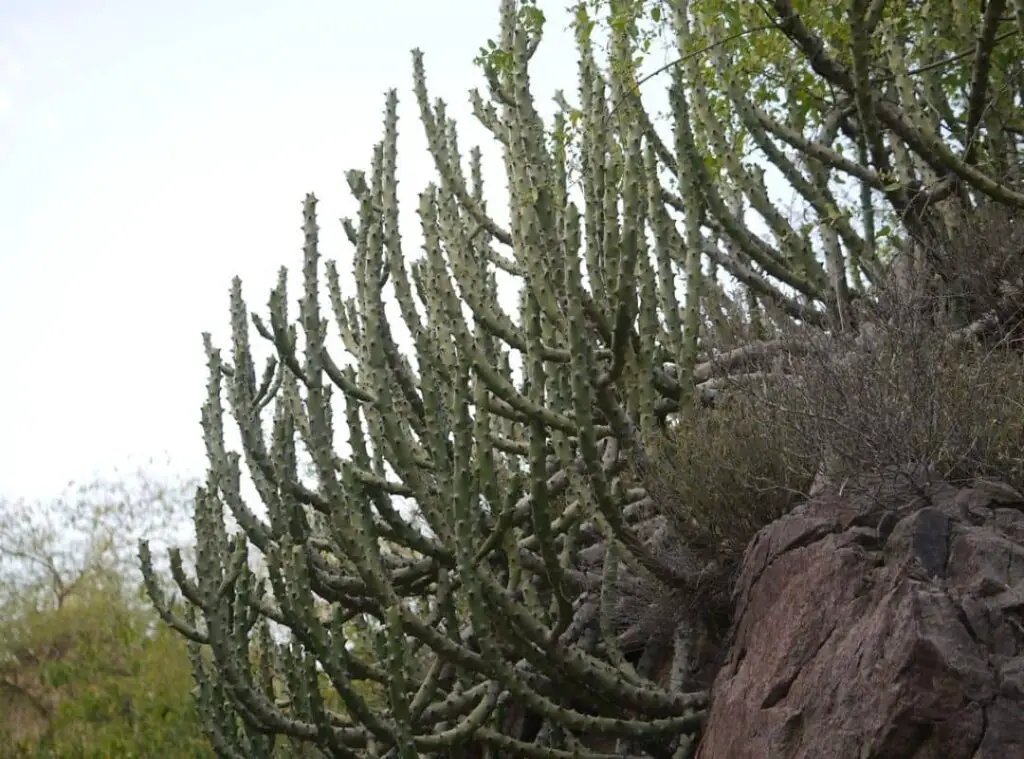
Euphorbia cauducifolia are endemic plants to India and to Pakistan. They could vary in terms of their sizes as well as in the density of the spines.
Euphorbia cauducifolia would grow in an erecting manner and they would be about 3-5 cm in diameter. Moreover, Euphorbia cauducifolia would tend to take a cylindrical shape.
Their leaves would be pale green to green color. The leaves of the Euphorbia cauducifolia would be more oval in shape and fleshy to the touch.
Moreover, they produce flowers in yellow. Euphorbia cauducifolia would flower from February to March.
09. Euphorbia guillauminiana
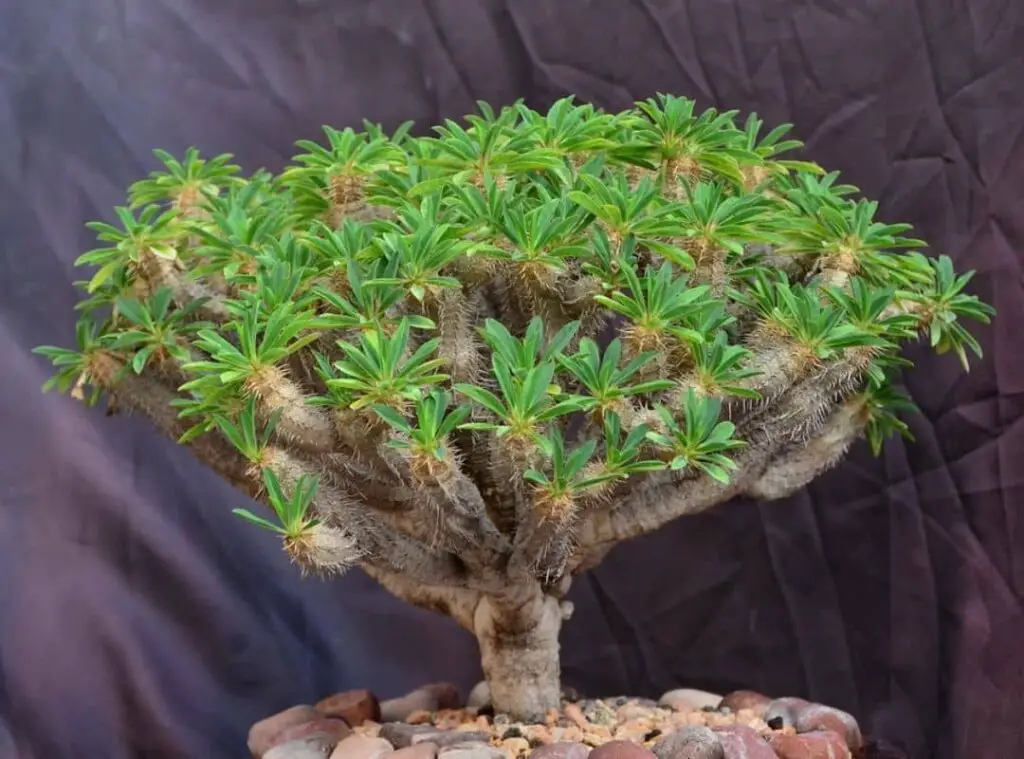
Euphorbia guillauminiana are native plants to Madagascar. These grow in a shrub type and marry carry branches which are thick.
Euphorbia guillauminiana are flowering plants too. In fact, they produce flowers in yellow or in red. They would carry a stem which is thick.
Further the Euphorbia guillauminiana stem would be 10 cm in height. Euphorbia guillauminiana develop leaves which are sessile or short petioles.
They would be dark green in color and glossy as well. They may carry leaf margins which you could spot in pink or in white.
10. Euphorbia unispina
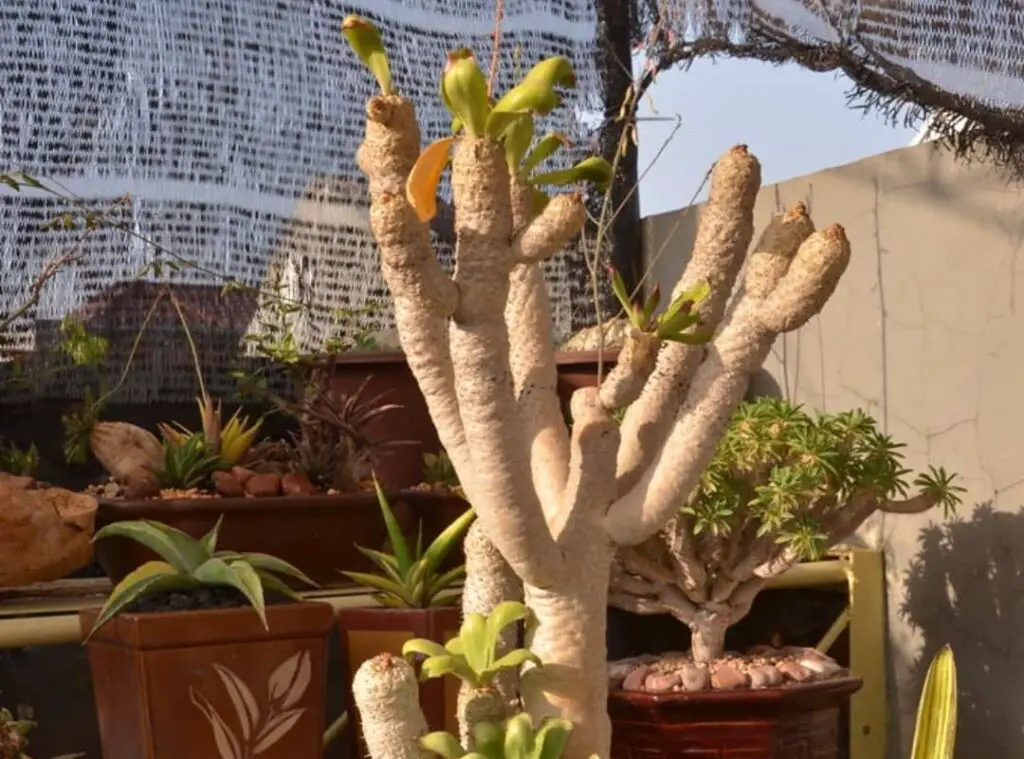
Euphorbia unispina are originally from Southern Sudan. They grow as shrub types whilst carrying short thick stems.
They may carry cylindrical branches which will further consist of leaves which are fleshy, thick. Those leaves will form in rosette type.
Further chances are that those branches may carry a thick silvery gray mantle of cork as well. They would bloom with some attractive flowers in green.
Their stems would tend to take a cylindrical shape and would be silvery gray in color. Moreover, they may carry spines which you could spot in dark gray in color.
Their leaves will arrange in a spiral manner.
11. Euphorbia decepta
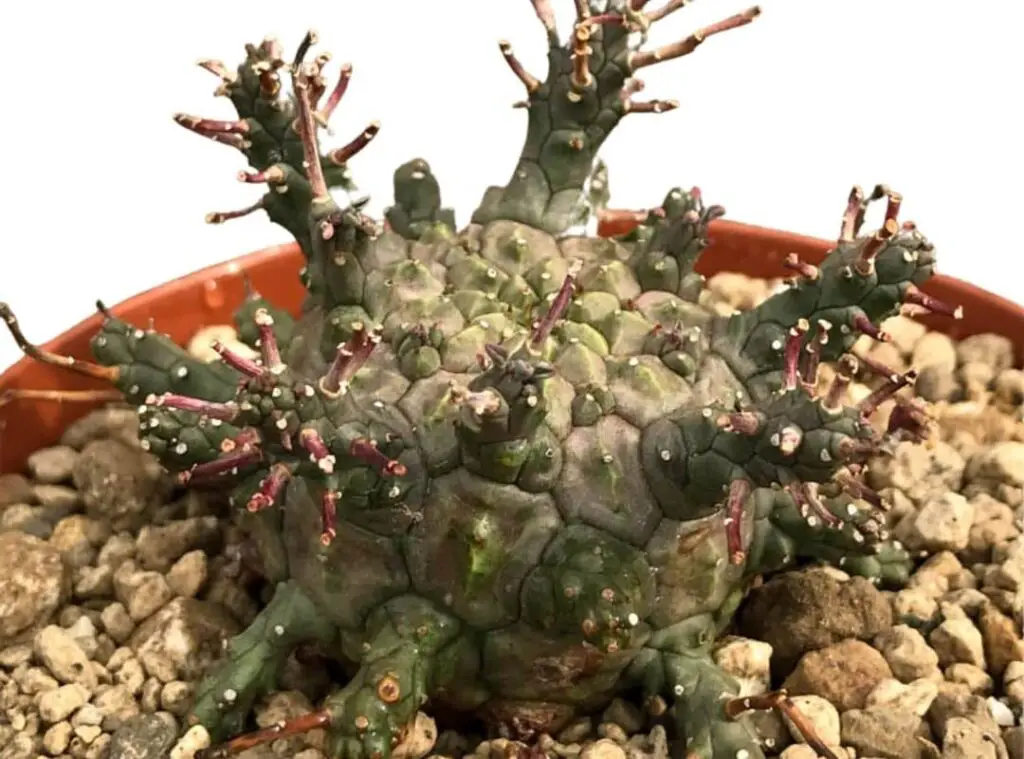
Euphorbia decepta are endemic plants to South Africa. They are more like dwarf plants and would usually grow leafless and spineless as well.
You could spot them carrying a stem which is flattened and tends to look like a tuber caudex. They would be dry ground in color.
Their stem would be spherical and very thick. Euphorbia decepta leaves would be very rudimentary and inconspicuous.
They would tend to take an ovate shape and they would be fleshy to the touch. Moreover, Euphorbia decepta produce flowers in green and in purple. They would be cup shaped.
12. Euphorbia flanaganii
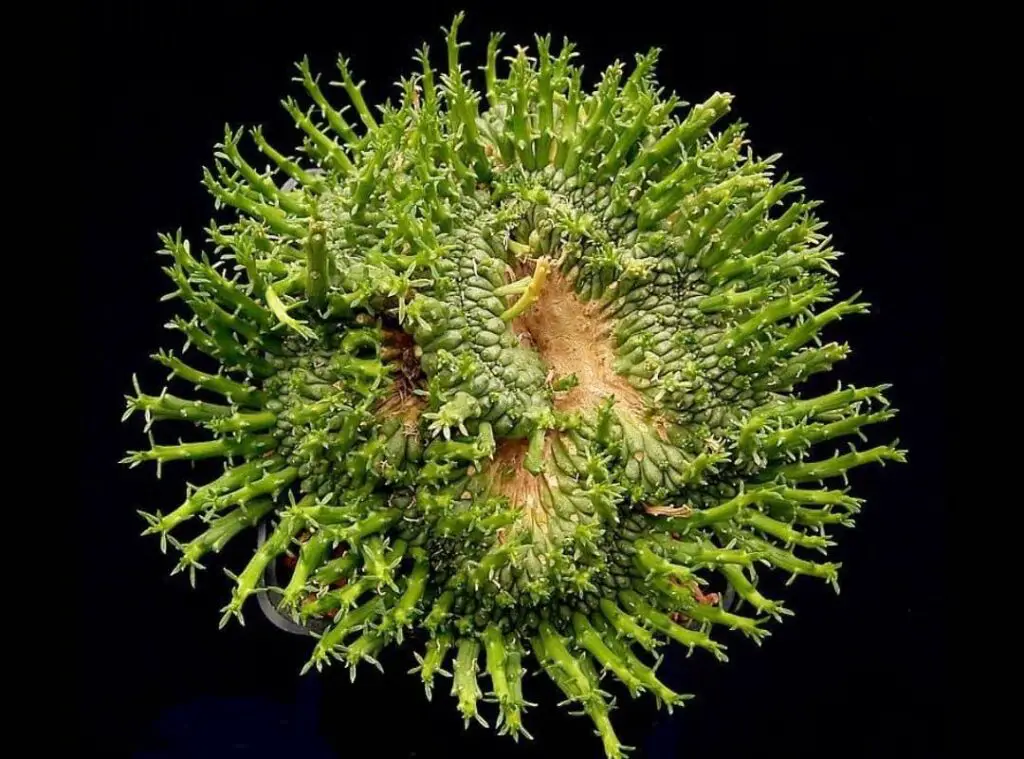
Euphorbia flanaganii are endemic plants to South Africa. These are also low growing sets of plants which usually grow spineless.
They would carry a central stem which is more flattened and spherical in shape. Euphorbia flanaganii are known as Medusa plants.
They produce flowers in yellow and they may carry a fragrance as well. Those flowers will form solitary. Further Euphorbia flanaganii flowers would be hairy as well. Their leaves would be linear and deciduous too.
13. Euphorbia gorgonis
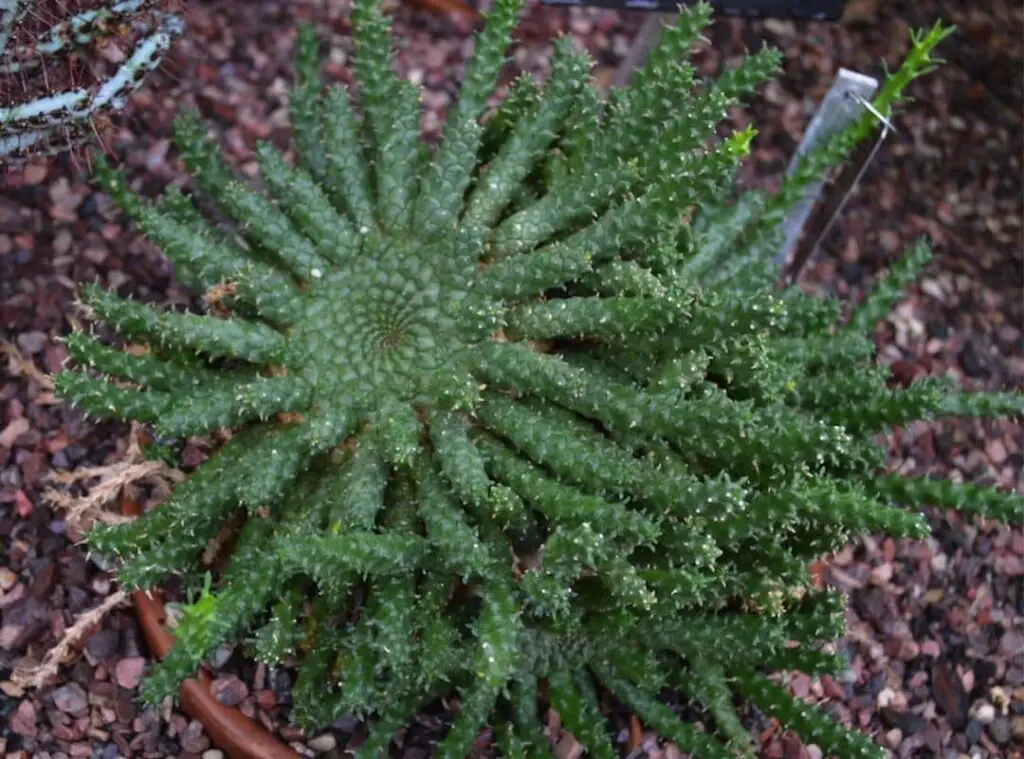
Euphorbia gorgonis are endemic plants to South Africa. Euphorbia gorgonis are yet another set of plants which would grow spineless.
They also carry a caudex which bears a series of compact sets of branches. The caudex of the Euphorbia gorgonis would be globose in shape or obconic.
The leaves would be rudimentary, and you could commonly spot them in the young plants. Besides, they produce a fruit item which could be subglobose.
14. Euphorbia gymnocalycioides
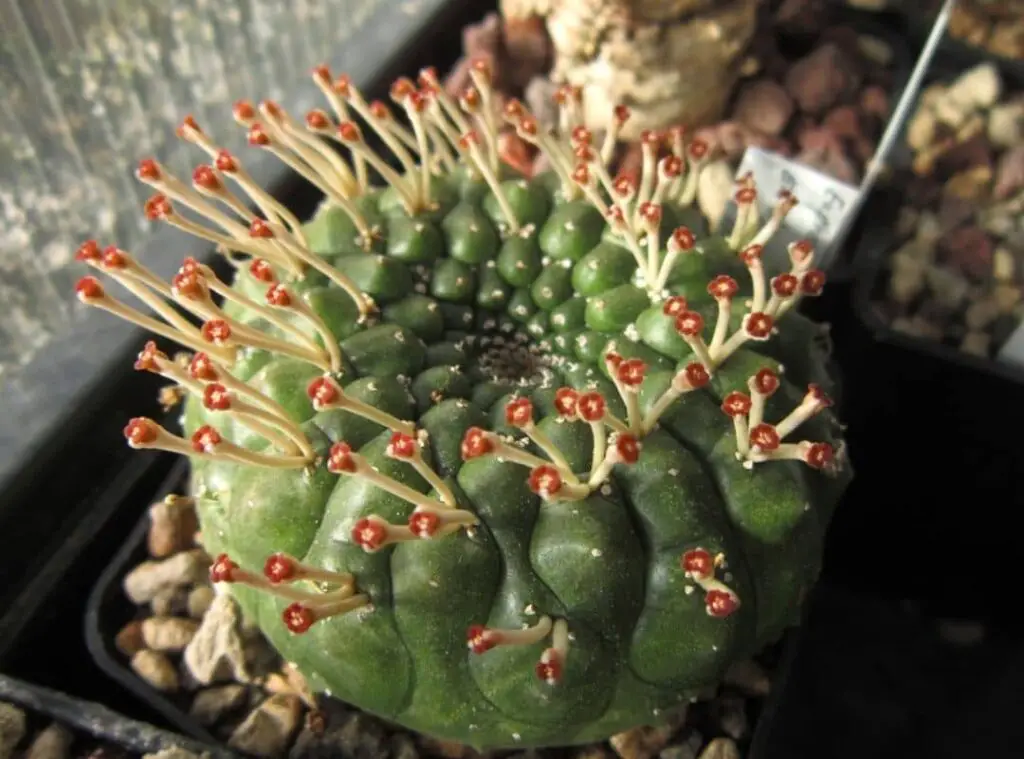
Euphorbia gymnocalycioides are endemic plants to Southern Ethiopia. They would carry a body which you could spot in deep green in color.
Their stem would be flattened or globular. Further chances are that you could spot them forming stems in sub globular or shortly cylindrical shape.
You could spot them in blue-green in color. Once you expose them for full sunlight, they turn dark tan to purple in color.
The leaves of the Euphorbia gymnocalycioides would be rudimentary and ephemeral. They would produce flowers during summer.
15. Euphorbia stellatas
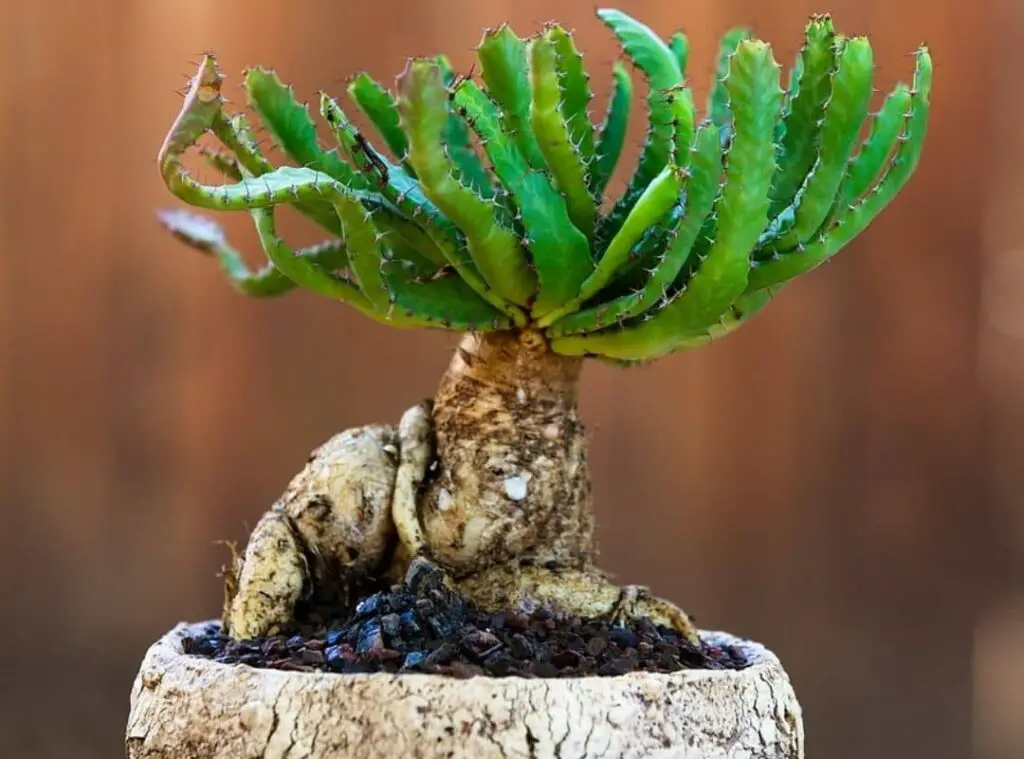
Euphorbia stellatas are originally from South Africa. It would tend to look like a prickly sprouting potato as well. They produce flowers in an odd green color.
Their caudex would be short and conical and woody as well. The caudex would be about 5-15 cm tall and 6-7 cm in diameter.
They can resist the drought due to the water storage they have in the caudex. Besides, they produce paired stipular spines.
Moreover, Euphorbia stellatas plants bloom with green, yellow flowers. Last but not least , they would form a fruit item which is strongly lobed.
16. Euphorbia trichadenia
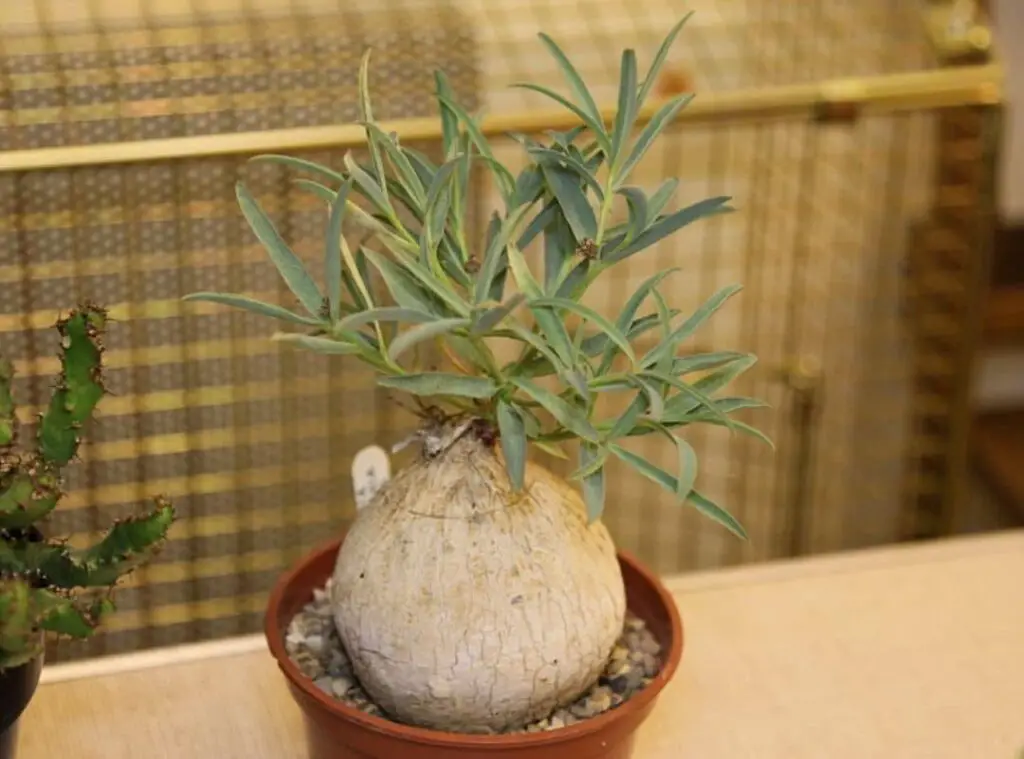
Euphorbia trichadenia are dwarf succulents which you would commonly find in Southern Africa. They would tend to take a look at the bottom half of the ponytail palm.
They would carry tiny clusters of leaves. Further the flowers will form on top of the plants. Euphorbia trichadenia would carry a large trunk ( caudex ) in the plants.
They would contain bulbous roots which could store water and which they will use during droughts.
17. Euphorbia horrida
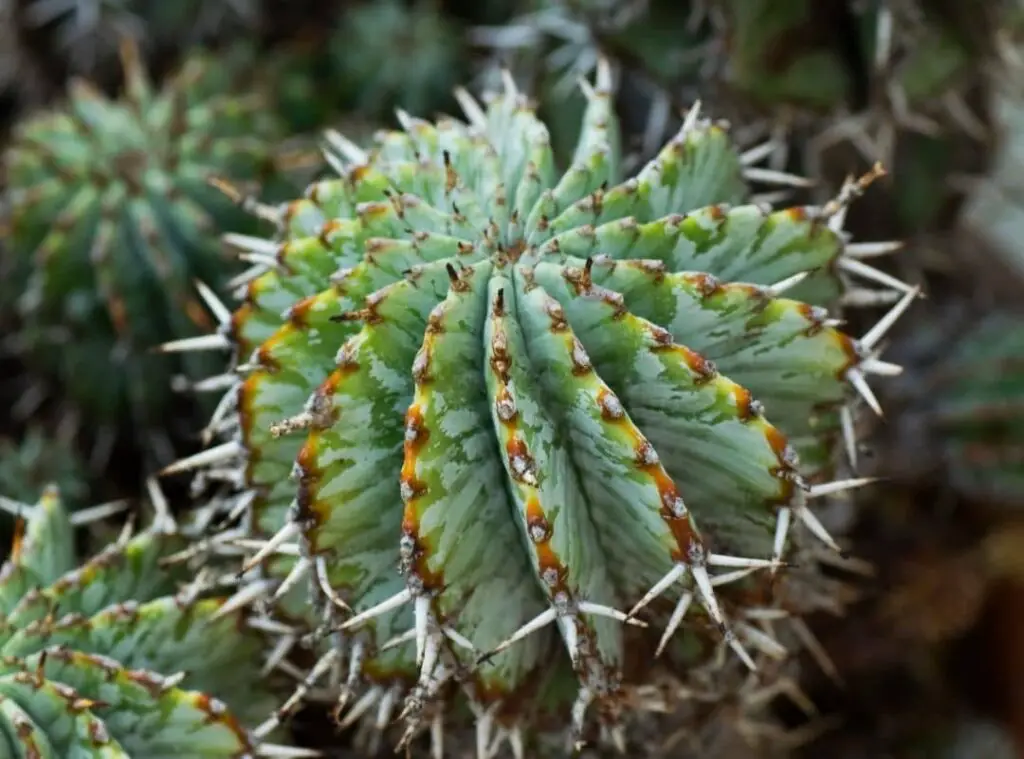
Euphorbia horrida plants are native plants to South Africa. They grow as spiny shrub succulent types. Euphorbia horrida plants would further carry irregularly grown clumps of stems as well.
The Euphorbia horrida stem would be 100-150 mm in thickness and 150 cm in height. The stem would be cylindrical.
Further you could spot Euphorbia horrida plants stems in blue gray to gray green color. Further chances are that they may carry white stripes as well.
Euphorbia horrida plants leaves would be inconspicuous and ephemeral in the center of the plants. Besides these, they produce flowers in green, yellow colors. Those flowers are small and would further carry hairs as well.
18. Euphorbia buruana
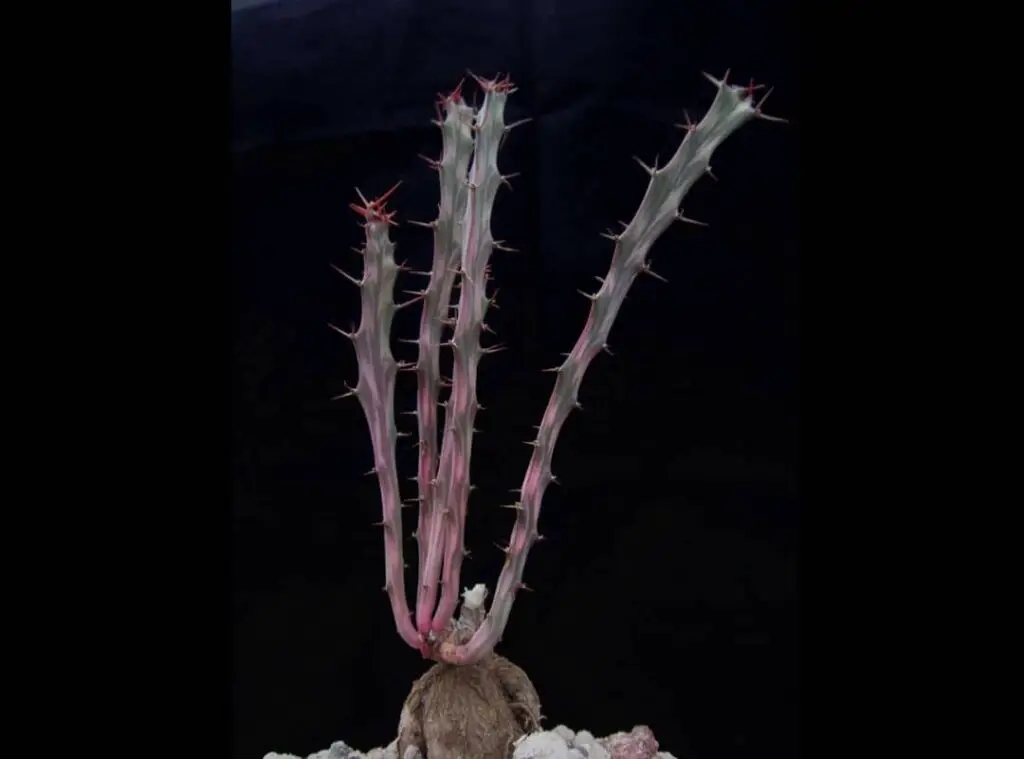
Euphorbia buruana are endemic plants to Kenya and to Tanzania. They are perennial succulents. They also have a larger caudex that tends to grow as spiny shrublets.
Their main stem would grow partially buried in the ground. The stems would be globe shaped. Euphorbia buruana leaves would be deltoid and deciduous. Moreover, they bloom with cup shaped flowers in yellow.
19. Euphorbia primulifolia
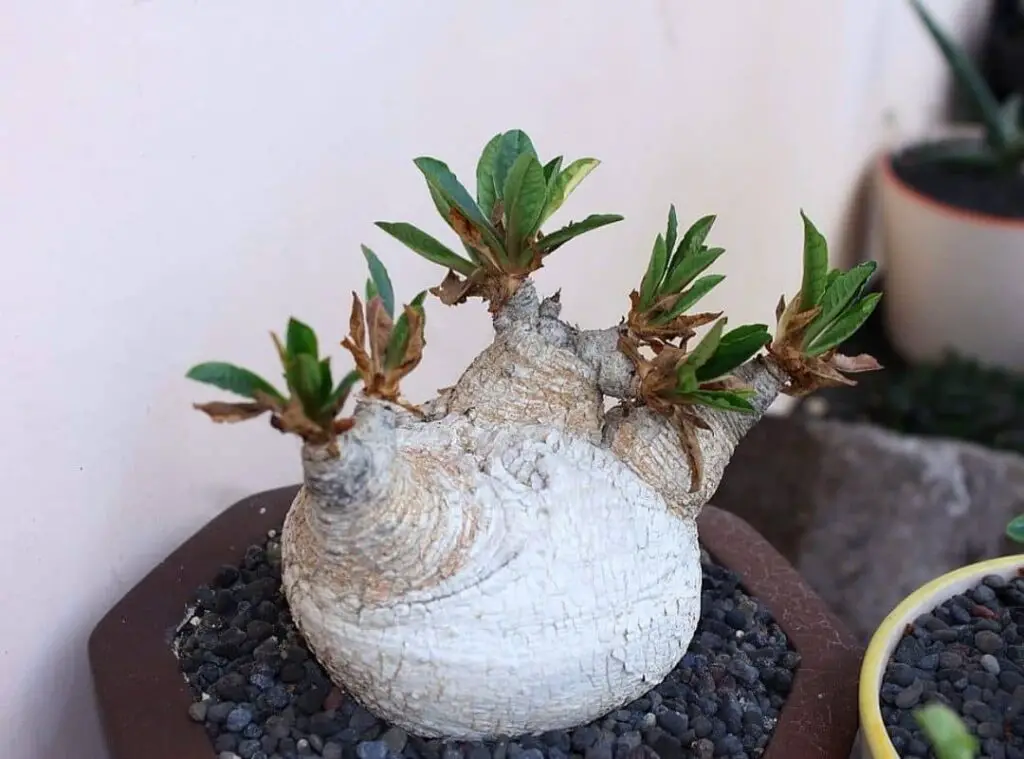
Euphorbia primulifolia are small decorative plants. They would be about 15 cm when they grow to their best. Further they would be about 8 cm ( 3,2 inches ) wide.
Their leaves would be dark green in color and tend to form in rosettes. Euphorbia primulifolia caudex would be about 8 cm ( 3.2 inches ) in width. Further they produce flowers in white.
How do you take care of Caudiciform succulents?
You need to ensure that you water these plants well when they are actively growing and by then they will have their leaves grown.
If you are unsure how much you need to water them, best is to water them less so that you will not make any damages due to overwatering.
Further, always choose a well-draining soil mix for them. You may consider using elements such as sand, pumice to further enhance the draining of the soil mix.
Unless it would lead to root rot. Besides, they would prefer to stay warm during the year. Hence do not expose them to frost as it would be unhealthy for them. Some people tend to grow them in green houses during these periods also.
How do caudex plants grow?
Caudex plants use the caudex to conserve water as well as nutrients. They would actively grow during their growing season and tend to slow the growth as the growing period ends.
Read Next : Crassula Nealeana Care | It Is Not A Everyday Plant! |
